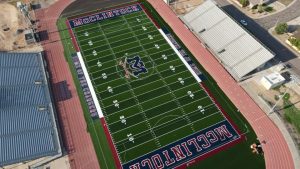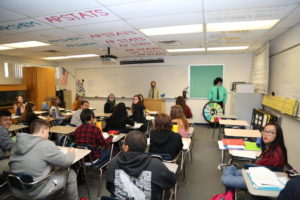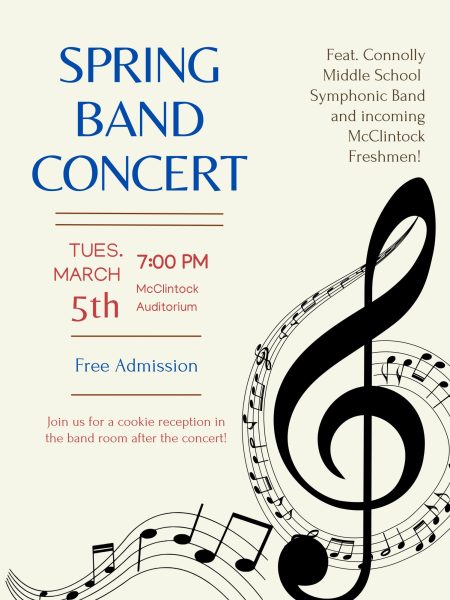ACE program strive students to success
January 8, 2016
The ACE program is an organization funded by Maricopa Community Colleges to give high school students the opportunity to earn college credits while still in high school.
“The program and class was great, it provided me with resources and help through the college process. It allowed me to experience college classes before I even graduated. I was really fortunate to be a part of the program because it saved me a lot of money,” senior Tristan Chen said.
Students can apply to the program while they are sophomores in high school. Student applications are reviewed thoroughly by the ACE Staff. They search the application to make sure that students meets any of the criteria such as 2.0 GPA or higher, first generation to attend college, single parent home, underrepresented group, economic hardship, works 10-30 hours, foster care, lives in temporary housing, teen parent or legacy – sibling or relative of an ACE participant. The ACE Staff all considers the applicant’s essay, transcripts, and letters of recommendation to reach a decision of acceptance.
The program scholarship covers the class tuition and the registration fee for each semester the student takes a class. The ACE Scholarship does not cover textbooks, transportation, library fines/parking tickets, transcript fees and dual enrollment classes at the high school.
“The ACE scholarship is a two years college program – students take two classes in the first summer, one class in the fall and one in the spring. The cycle is repeated again for the senior (12th grade) year. Each class is assigned an amount of credits, usually 3. Each credit is $84, times that by 3 credits per class is $252 and add the
$15 registration fee that give you $267.” “The scholarship covers the tuition of your classes for two years which totals to +$1850.00. The students do not physically see this money, but if they were to pay for it on their own this is the amount they would have to pay out of pocket,” ACE Advisor and ACE Alumni Jenny Herrera.
Once accepted, students begin their journey as a college student in the summer before their junior year and the program ends the spring semester of their senior year. Students are given the resources to look up their schedule, book information and their student MEID accounts. Each student is required to take CPD150; a class that is required of all college students, this course discusses tips on how to become a successful college student. Depending on the students Accuplacer score (students are required to take a placement test when they are accepted to determine their level of reading and writing) students will take a reading or an English class.
“In the program we focus we focus on the AA – Associates in Arts. It does not matter what career field you plan to pursue; engineer or doctor, you need to have your English, Social/Behavioral Sciences and Humanities/Fine Art credits. The program focuses on getting those credits out of the way first. Once students are in their senior year or have completed their English/reading requirements, they can explore different classes in humanities or social behavior. While I was in the ACE Program, I wanted to study Criminal Justice so I took criminal justice classes. Later I found out that my interest in criminal justice was only because I watched a lot of Criminal Minds. Through the ACE Program’s semester workshops I was able to meet the Career Services staff. They helped me find the career goal I have now, to become a Speech Language Pathologist,” Herrera said.
Student’s permanent college transcripts begin as soon as they start a college class. A passing grade qualifies as any grade C or above. If a student is failing the class (D or F) they can opt to have a W – meaning they are withdrawn from the class. Some teachers may choose to withdraw a student from the class with a Y – meaning a withdrawal from the class because they are failing. If this happens, the ACE staff meets with the student to see what is going on and to see what can be done to help the student be successful.
“The ACE Program gave me the head start I desperately needed. My parents migrated to the United States and worked very hard to provide me a good life. I always knew I wanted to further my education but I didn’t know how to start any of the processes necessary for school. The ACE Program offered me a head start and a variety of resources I needed to be a successful college student. Because of the ACE
Program I was able to finish my Associates in Arts Degree (a 2 year degree) 1 year after I graduated high school. I am currently pursuing a Bachelors in Speech and
Hearing Sciences at ASU and a minor in Educational Studies. The ACE Program is an awesome opportunity and I encourage anyone to apply!” Herrera said.
The program can be quite overwhelming for some students. Having to complete high school and college at the same time can challenging. If students feel that they can’t go on with the program or feel like they need to take a break from the program, they can take out a “stop out”. Students can take their stop-out if he or she has completed their previous semester successfully with a grade higher than a “C”.
However, students are not allowed to take a semester off during the summer.
“If a student decides to leave the program, they do not lose any credits they have received up to that point,” Herrera said.
The ACE Program has a sister program for Native America students called Hoop of
Learning. This program is very similar to the ACE Program, students can begin their college course as soon as they begin high school (9th grade). The Hoop of Learning
Scholarship covers tuition, fees, books, supplies and program activities. Students have the opportunity to take college success classes, general studies coursework, American Indian Studies, Native American Cultural Pride and awareness, American Indian History and even Navajo Language and Government classes.
“HOL is changing Native American student lives! Students are earning college credit in a culturally sensitive environment, receiving strong faculty support, and developing a successful pathway to college,” HOL Community member/HS Indian Education Director, Theresa Price.
The Hoop of Learning Program is flexible; students can attend only the summer sessions or go year round (fall & spring) semesters. The goal is to bring down barriers and create a sense of community. Many current Native American high school students do not have the experience of living on the reservation and have not been immersed in their culture. Besides, preparing students for college, Hoop also helps students gain knowledge about their individual tribe, other tribal nations, and contemporary information about the changing Native American society. This is accomplished through guest speakers, events, Native American themed college courses, and from each other.
“As a mother of two Hoop of Learning students (one currently in the program and the other an alumni), I feel gratitude for the opportunity they have been afforded. Both my sons have thrived in the program and seemed more focused on their studies. I feel that the Hoop of Learning has provided my sons with cultural experiences that they normally wouldn’t have received in the city. Most importantly, they were surrounded with other Native American students who have their same ambitions, shared heritage and life goals,” Parent of HOL student Suzette Johnson said.
Students have earned anywhere from 12 to 60 college credits. It’s rare to earn 60 credits, which is enough to earn an Associates Degree, but several students from around Maricopa Community Colleges have accomplished this feat.
“The ACE Program showed me how much I could handle. From a school perspective, it showed me my strength, ” ACE graduate Emily Armor.
The ACE program is an opportunity for high school students to get ahead in his or her studies.




